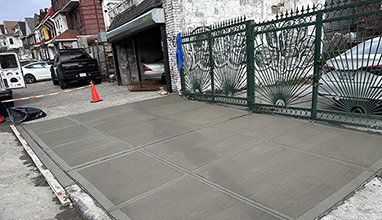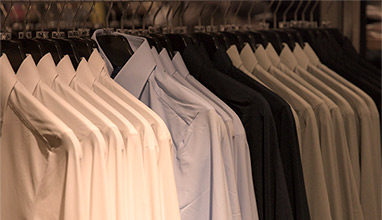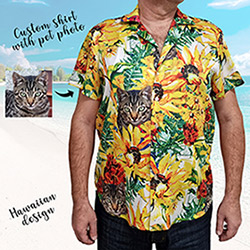Eco-Friendly Textiles Revolutionize Sustainable Fashion
Eco-friendly textiles are transforming the landscape of sustainable fashion by offering innovative solutions that prioritize environmental responsibility. Both green technology in fashion and eco-friendly textile innovations play a pivotal role in this shift. Advanced materials for circular fashion, such as durable and water-resistant fabrics, not only enhance textile longevity but also reduce waste. Additionally, sustainable fabric treatments and silicone coatings for fabrics improve functionality while maintaining eco-conscious standards. Moreover, the integration of silane in textiles ensures enhanced durability. Consequently, eco-friendly textiles are driving a revolution in the industry.

1. What Are the Benefits of Using Eco-Friendly Textiles?
Eco-friendly textiles offer significant environmental benefits by reducing pollution and conserving natural resources. They minimize the use of harmful chemicals and promote sustainable practices. Additionally, these textiles contribute to lower carbon emissions. Their adoption supports ethical production methods.
Durable and water-resistant fabrics enhance the longevity of clothing. This durability not only saves resources but also aligns with the principles of circular fashion. Textile durability with silane further strengthens fabrics. These advancements ensure that sustainable clothing remains practical and long-lasting.
Sustainable fabric treatments improve the functionality of eco-friendly textiles without compromising their environmental benefits. Silicone coatings for fabrics, for instance, add water resistance and flexibility. Moreover, these treatments enhance the performance of advanced materials for circular fashion. By combining innovation with sustainability, eco-friendly textiles address both environmental and social challenges.
2. How Are Eco-Friendly Textiles Made?
Eco-friendly textiles rely on sustainable production processes that minimize environmental impact. Manufacturers often use organic or recycled raw materials. Additionally, they adopt energy-efficient methods and water-saving technologies to lower carbon emissions and conserve natural resources. These practices ensure that eco-friendly textiles align with the principles of sustainable fashion materials.
Silane in textiles plays a important role in enhancing fabric durability and sustainability. It strengthens fibers. Silicone coatings for fabrics further improve performance by adding water resistance and flexibility. These coatings not only extend the lifespan of textiles but also reduce the need for frequent replacements.
Advanced materials for circular fashion are integral to the production of eco-friendly textiles. These materials are designed for recyclability and biodegradability. Furthermore, sustainable fabric treatments enhance the functionality of these textiles without compromising their environmental benefits. By combining innovative technologies with sustainable practices, the production of eco-friendly textiles addresses both environmental and consumer demands.
3. What Materials Are Considered Eco-Friendly Textiles?
Eco-friendly textiles include a wide range of sustainable fashion materials that prioritize environmental responsibility. Organic cotton, hemp, and bamboo are popular choices due to their minimal environmental impact during cultivation. Recycled polyester and upcycled fabrics also contribute to sustainability by reducing waste and conserving resources. Additionally, materials like Tencel and Piñatex, derived from renewable sources, offer innovative alternatives for sustainable fashion.
Eco-friendly textile innovations have introduced advanced materials for circular fashion. These innovations integrate green technology in fashion. For instance, durable and water-resistant fabrics enhance the longevity of clothing. This approach aligns with the principles of sustainability by minimizing waste and resource consumption.
Silane in textiles and silicone coatings for fabrics play a significant role in enhancing the performance of eco-friendly materials. Silane improves textile durability. These advancements ensure that eco-friendly textiles not only meet environmental standards but also deliver high-quality performance for modern consumers.
4. Are Eco-Friendly Textiles More Expensive Than Traditional Fabrics?
Eco-friendly textiles often have higher upfront costs compared to traditional fabrics due to the use of sustainable raw materials and advanced production methods. Organic cotton, recycled polyester, and other sustainable fashion materials require ethical sourcing and environmentally friendly processes. However, these costs reflect the commitment to reducing environmental impact and promoting fair labor practices.
Durable and water-resistant fabrics, commonly found in eco-friendly textiles, provide significant long-term value. Their enhanced durability reduces the need for frequent replacements, ultimately saving money over time. Textile durability with silane further strengthens these fabrics. This longevity offsets the initial investment.
Eco-friendly textile innovations and green technology in fashion also contribute to the value of these materials. Silicone coatings for fabrics improve water resistance and flexibility. Advanced materials for circular fashion ensure recyclability and biodegradability. While the initial price may be higher, the environmental benefits and extended usability of eco-friendly textiles make them a worthwhile investment for both consumers and the planet.
5. How Can I Identify Eco-Friendly Textiles When Shopping?
Zmsilane suggests shoppers can identify eco-friendly textiles by looking for specific certifications and labels that guarantee sustainability. Certifications such as GOTS (Global Organic Textile Standard) and OEKO-TEX ensure that the materials meet strict environmental and safety standards. Additionally, labels indicating the use of organic cotton, recycled polyester, or other sustainable fashion materials provide clear guidance for eco-conscious consumers. These certifications help buyers make informed decisions while supporting sustainable practices.
Sustainable fabric treatments also play a key role in identifying eco-friendly textiles. Treatments that enhance durability and water resistance, such as silicone coatings for fabrics, often indicate a commitment to sustainability. Textile durability with silane further ensures that the fabric maintains its quality over time. These features not only improve functionality but also align with the principles of circular fashion by extending the lifecycle of clothing.
Green technology in fashion has introduced innovative ways to recognize eco-friendly options. Advanced materials for circular fashion, designed for recyclability and biodegradability, are often highlighted by brands committed to sustainability. Shoppers should also prioritize products that emphasize eco-friendly textile innovations, as these reflect the latest advancements in reducing environmental impact. By focusing on these factors, consumers can confidently choose textiles that align with their values.
6. Innovations in Eco-Friendly Textiles
Silicone applications in sustainable clothing have introduced remarkable advancements in eco-friendly textiles. Silicone coatings for fabrics enhance water resistance and flexibility. These coatings not only improve the functionality of textiles but also extend their lifespan. Additionally, silicone-based treatments ensure that fabrics maintain their eco-friendly properties while meeting the demands of modern consumers.
Textile durability with silane has become a key innovation in sustainable fashion materials. Silane strengthens fibers. This durability reduces the need for frequent replacements. Furthermore, silane treatments enhance the performance of eco-friendly textiles without compromising their environmental benefits.
Advanced materials for circular fashion are shaping the future of eco-friendly textiles. These materials are designed for recyclability and biodegradability. Green technology in fashion has enabled the development of textiles that combine innovation with sustainability. By integrating these advanced materials, the industry continues to push boundaries.
Hits: 3772 | Leave a comment

















